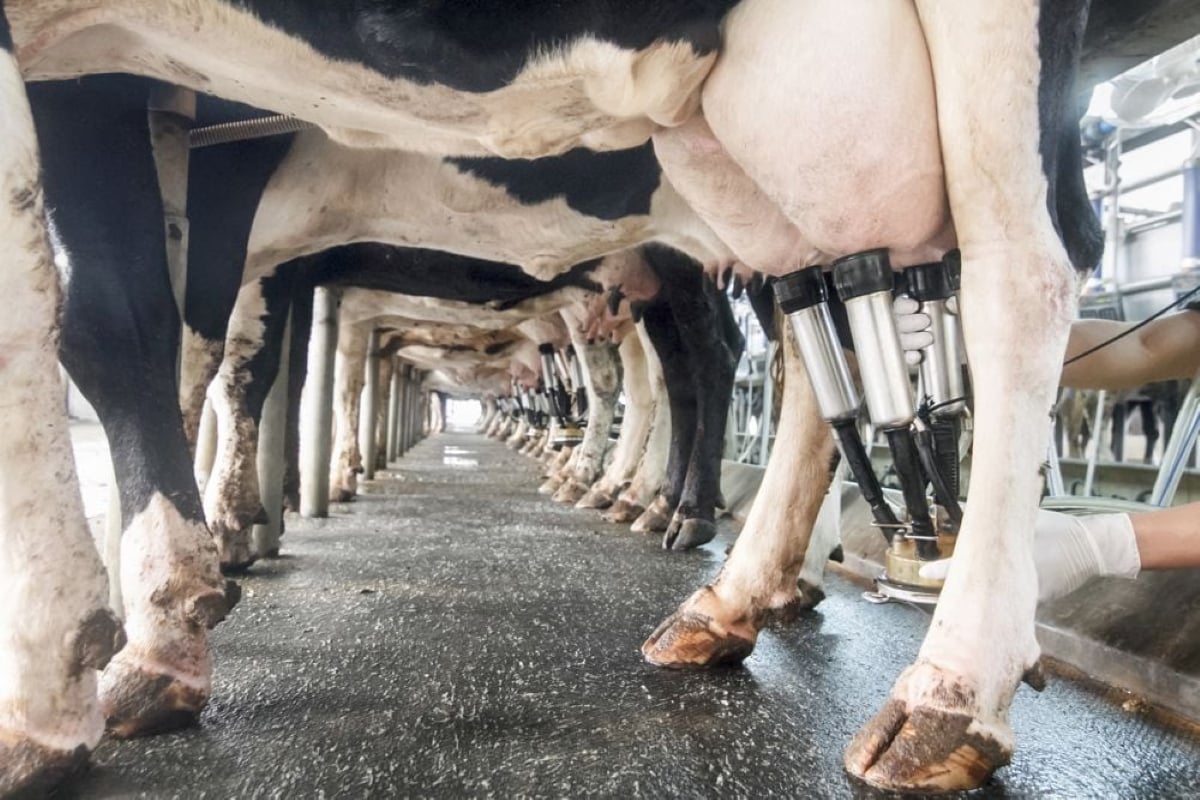The skirmishes are over.
The war on glyphosate has officially begun.
The World Health Organization dropped a proverbial nuclear bomb March 20, releasing a report classifying glyphosate as “probably carcinogenic to humans.”
Ariel Fenster, a McGill chemistry professor and founding member of the university’s Office for Science & Society, said the WHO report was startling because the organization said glyphosate is a probable cause of cancer rather than a possible cause.
The distinction is massive, at least in terms of public perception.
Read Also

Farm gate milk price to rise in 2026
The Canadian Dairy Commission will raise its farm gate milk price by 2.3255 per cent in February, the Crown corporation announced on Friday.
“What concerns me is it came as a 2A (designation),” said Fenster, a well-known science communicator who comments on issues related to food, medicine and the environment.
“2A is probably carcinogenic and 2B is possibly carcinogenic. Coffee is considered to be possibly carcinogenic.”
Fenster said the classification is curious because other scientific bodies have looked at the same data and found no link between cancer and glyphosate.
“No alarm was raised before.”
A working group of 17 experts at the WHO’s International Agency for Research on Cancer issued a report on the carcinogenicity of five pesticides, including glyphosate, the most widely used herbicide in the world.
After reviewing scientific papers on glyphosate and glyphosate formulations, the IARC experts concluded:
• Glyphosate, commonly known as Roundup, may increase the risk of non-Hodgkin lymphoma in people exposed to the chemical in their occupation.
• Some studies demonstrate that exposure to glyphosate and glyphosate formulations promoted tumours in laboratory mice.
• Glyphosate “induced DNA and chromosomal damage in mammals, and in human and animal cells in vitro.”
Consequently, the IARC classified glyphosate as Group 2A: probably carcinogenic to humans.
“This category is used when there is limited evidence of carcinogenicity in humans and sufficient evidence of carcinogenicity in experimental animals,” IARC said.
Monsanto issued an angry and thorough rebuttal of the designation, condemning the IARC decision as shoddy and biased.
“We don’t know how IARC could reach a conclusion that is such a dramatic departure from the conclusion reached by all regulatory agencies around the globe,” said Philip Miller, Monsanto’s vice-president of global regulatory affairs.
“We have issued an urgent request for appropriate personnel of the WHO to sit down with the global glyphosate taskforces and other regulatory agencies to account for the scientific studies used in their analysis and, equally as important, to account for those scientific studies that were disregarded.”
A chorus of global experts also criticized the IARC report, including Colin Berry, emeritus professor of pathology at Queen Mary University of London.
“What is missing in this new assessment is balance in the consideration of the studies,” he said.
“There are over 60 genotoxicity studies on glyphosate with none showing results that should cause alarm relating to any likely human exposure. For human epidemiological studies, there are seven cohort and 14 case control studies, none of which support carcinogenicity.”
Fenster said IARC evaluated the same studies as other literature reviews but reached a different conclusion.
“How come previous studies on this same data did not show any affect?” he said.
“From what I understand, the Germans looked at this and found … it was probably not carcinogenic.”
The conclusion may be different, but so is the source.
A few scientists and activist groups have attempted to blame glyphosate for birth defects, autism, celiac disease and a laundry list of other diseases.
Most toxicologists and medical professionals ignored those studies because they came from biased and unreliable scientists.
Fenster said it’s easy to dismiss the lunatic fringe, but it’s much harder to condemn the credibility and motives of the WHO, a United Nations agency.
“I trust the WHO. With wireless, for example, this craziness about wi-fi causing all these problems, they said there is no issue there,” he said.
“Often when things like this happen, I refer to the WHO. They have no interest in making things appear worse than they are. It’s not like Greenpeace or people like this, who have this apocalyptic view of the world and (say) everything causes cancer.”
The IARC also evaluated the safety of malathion, which is used to kill mosquitoes in cities such as Winnipeg. Based on Canadian studies linking malathion to an increase in prostrate cancer and international research on rats exposed to the insecticide, IARC classified malathion as 2A: probably carcinogenic.
Glyphosate toxicity
National regulators and global organizations have reported on glyphosate and its relationship to cancer. They include:
“Health and Welfare Canada has reviewed the glyphosate toxicology database, which is considered to be complete. The acute toxicity of glyphosate is very low. The submitted studies contain no evidence that glyphosate causes mutations, birth defects or cancer.” — Canadian Pest Management Regulatory Agency (1991)
“In view of the absence of a carcinogenic potential in animals and the lack of genotoxicity in standard tests, the meeting concluded that glyphosate is unlikely to pose a carcinogenic risk to humans.” — World Health Organization/Food and Agriculture Organization joint meeting on pesticide residues (2004).
“Glyphosate was considered unlikely to pose a carcinogenic risk in humans.… In epidemiological studies in humans, there was no evidence of carcinogencity and there were no effects on fertility, reproduction and development or of neurotoxicity that might be attributed to glyphosate.” — Glyphosate Reevaluation Assessment Report, Germany Rapporteur Member State for the European Annex I Renewal of Glyphosate (2014)
Source: Genetic Literacy Project
Contact robert.arnason@producer.com














